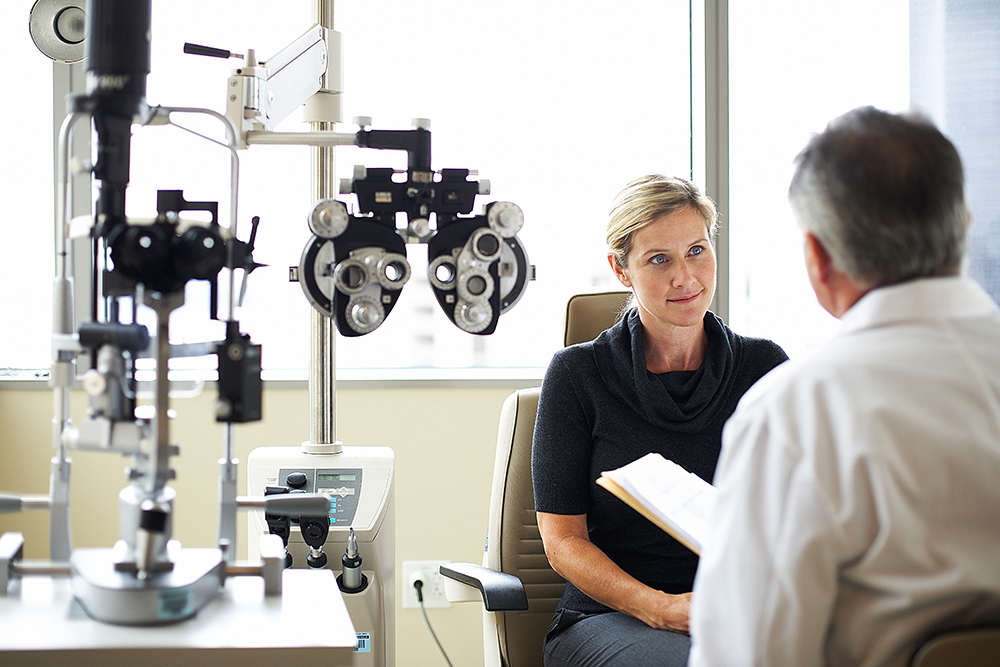
你或许听说过“筛查拯救生命”这句谚语,或许你已经进行了或你的医生建议你进行从糖尿病和抑郁症到宫颈癌和结直肠癌等一系列常规筛查。这些筛查独立于常规血压监测和胆固醇筛查之外,后者是年度健康护理的组成部分。
杜克初级保健诊所阿灵顿家庭医学(Duke Primary Care Arringdon Family Medicine)的家庭医生索恩达·P·诺曼博士表示:“筛查是预防性医疗的重要组成部分。我们希望在疾病变成麻烦并产生不可逆的后果之前,提前发现病症。”
以下是三十几岁、四十几岁和五十几岁时需要做的筛查。
三十几岁

抑郁症
2023年,抑郁症患病率创历史最高,有29%的成年人表示确诊患有抑郁症,比2015年高10%。
2022年,独立医疗专业小组美国预防医学工作组(United States Preventive Services Task Force,USPSTF)建议所有成年人进行抑郁症筛查。该工作组致力于提供循证预防性医疗建议。
医生可能会在你第二次就诊时询问你的胃口和睡眠模式变化、忧伤感或者缺少动机等情况,以确定你是否正在经历抑郁。埃默里大学医学院(Emory University School of Medicine)家庭医学系主任和埃默里初级护理项目负责人缇娜-安·汤普森博士认为,成年后应该坚持每年进行一次筛查。
宫颈癌
女性应从三十岁开始进行人乳头瘤病毒(HPV)筛查,HPV病毒是几乎一半高危型宫颈癌前病变的罪魁祸首。
华盛顿大学圣路易斯分校(Washington University in Saint Louis)的内科医生马修·邦泽莱特博士表示:“年轻女性可能感染这种病毒,有时候她们可以自动消灭这种病毒。如果在三十岁时[病毒]依旧存在,这应该引起我们的密切关注。”
除了常规试纸检测以外,无论你的性生活史和HPV疫苗接种情况是怎样的,建议每五年进行一次筛查。对于宫颈癌高风险患者,医疗保健提供者可能建议更早或更频繁地进行筛查。
糖尿病
从三十五岁开始,应该通过血糖检测筛查糖尿病前期和糖尿病。虽然美国预防医学工作组建议超重或肥胖者进行糖尿病筛查,但美国糖尿病协会(American Diabetes Association)建议,三十五岁及以上的成年人无论存在哪些风险因素,都要进行糖尿病筛查。
汤普森表示,医生还可能根据你的健康和风险因素,建议三十岁以后的成年人进行性传播传染病和人类免疫缺陷病毒(HIV)筛查。
四十几岁

视力
衰老与视力变化密切相关,因此建议四十岁的成年人进行眼科筛查。通过筛查可以检测青光眼和白内障等眼科疾病。在四十岁以后,这些疾病会变得更常见。
邦泽莱特表示:“随着时间的推移,眼睛晶状体会变得僵硬,这会改变它们近视和远视调节的能力。这些疾病通常会在步入四十岁时开始出现。”
结直肠癌
五十岁以下结直肠癌发病率有所提高,有超过10%的新增结直肠癌病例来自五十岁以下的成年人。因此,建议从四十五岁开始进行结直肠癌筛查。
马萨诸塞大学陈氏医学院(UMass Chan Medical School)家庭医学与社区健康副教授罗纳德·阿德勒博士表示:“结直肠癌筛查非常重要,但并非只有结肠镜检查这一种方式;粪便检测也是一种很好的选择。最好的检查是真正完成的检查。”
乳腺癌
今年早些时候,美国预防医学工作组发布了新版乳腺癌筛查指南。该工作组将存在一般乳腺癌风险的女性两年一次筛查的建议年龄从五十岁降低到四十岁。(美国癌症协会(American Cancer Society)自2003年起,建议从四十岁开始每年进行一次乳房X光造影检查。)
美国预防医学工作组提到调整筛查指南的原因之一是,黑人女性乳腺癌死亡率更高。
但乳房X光造影检查的有效性与《新英格兰医学杂志》(New England Journal of Medicine)上发表的一项研究相矛盾。该项研究发现,乳腺癌筛查结果增加与乳腺癌过度诊断之间存在密切联系。
阿德勒表示:“乳房X光造影检查被过度诊断的乳腺癌比例,一直存在争议,过度诊断的比例至少达到15%,甚至可能高达30%。因此,2,400名四十岁年龄段的女性需要进行筛查以预防一例乳腺癌死亡病例,其中会有数百例假阳性和十多例过度诊断病例。”
如果你的医疗保健提供者建议从四十岁开始进行乳房X光造影检查,阿德勒建议咨询这项筛查潜在的副作用,并根据自己的风险因素做出决策。
五十几岁

前列腺癌
在五十岁左右应该开始考虑前列腺癌检查(如果你是四十五岁或以上的非裔美国人,或者至少有一位一级亲属被确诊前列腺癌,你将面临较高的患病风险,因此你的医疗保健提供者可能建议更早进行筛查)。
邦泽莱特指出,前列腺癌筛查包括通过验血检测前列腺特异性抗原(PSA)水平,或进行直肠指检。
阿德勒补充道:“任何人在进行前列腺癌筛查之前,应该首先参与[与其医疗保健提供者的]共同决策过程,以了解自身的风险、福利和偏好与价值观。”
肺癌
建议烟民进行肺癌筛查。
对于有二十年“吸烟年包数”的烟民,建议进行低剂量计算机轴向断层(CAT)扫描。“吸烟年包数”按每天吸烟数量乘以吸烟年数计算。二十年每天一包香烟和十年每天两包香烟的“吸烟年包数”均为二十年。
诺曼表示:“我们所筛查的是任何类型可能致癌的结节或物质,从而建议患者接受恰当的治疗,或至少建议进行更频繁的监控。”
此外,诺曼表示,癌症筛查也是一次机会,可以劝告依旧在吸烟的人们戒烟,并为他们提供必要支持以成功戒烟。
了解与年龄和风险相关的筛查建议至关重要,你应该始终与医疗保健提供者进行诚实的对话,以确定适合自己的筛查。(财富中文网)
翻译:刘进龙
审校:汪皓
你或许听说过“筛查拯救生命”这句谚语,或许你已经进行了或你的医生建议你进行从糖尿病和抑郁症到宫颈癌和结直肠癌等一系列常规筛查。这些筛查独立于常规血压监测和胆固醇筛查之外,后者是年度健康护理的组成部分。
杜克初级保健诊所阿灵顿家庭医学(Duke Primary Care Arringdon Family Medicine)的家庭医生索恩达·P·诺曼博士表示:“筛查是预防性医疗的重要组成部分。我们希望在疾病变成麻烦并产生不可逆的后果之前,提前发现病症。”
以下是三十几岁、四十几岁和五十几岁时需要做的筛查。
三十几岁
抑郁症
2023年,抑郁症患病率创历史最高,有29%的成年人表示确诊患有抑郁症,比2015年高10%。
2022年,独立医疗专业小组美国预防医学工作组(United States Preventive Services Task Force,USPSTF)建议所有成年人进行抑郁症筛查。该工作组致力于提供循证预防性医疗建议。
医生可能会在你第二次就诊时询问你的胃口和睡眠模式变化、忧伤感或者缺少动机等情况,以确定你是否正在经历抑郁。埃默里大学医学院(Emory University School of Medicine)家庭医学系主任和埃默里初级护理项目负责人缇娜-安·汤普森博士认为,成年后应该坚持每年进行一次筛查。
宫颈癌
女性应从三十岁开始进行人乳头瘤病毒(HPV)筛查,HPV病毒是几乎一半高危型宫颈癌前病变的罪魁祸首。
华盛顿大学圣路易斯分校(Washington University in Saint Louis)的内科医生马修·邦泽莱特博士表示:“年轻女性可能感染这种病毒,有时候她们可以自动消灭这种病毒。如果在三十岁时[病毒]依旧存在,这应该引起我们的密切关注。”
除了常规试纸检测以外,无论你的性生活史和HPV疫苗接种情况是怎样的,建议每五年进行一次筛查。对于宫颈癌高风险患者,医疗保健提供者可能建议更早或更频繁地进行筛查。
糖尿病
从三十五岁开始,应该通过血糖检测筛查糖尿病前期和糖尿病。虽然美国预防医学工作组建议超重或肥胖者进行糖尿病筛查,但美国糖尿病协会(American Diabetes Association)建议,三十五岁及以上的成年人无论存在哪些风险因素,都要进行糖尿病筛查。
汤普森表示,医生还可能根据你的健康和风险因素,建议三十岁以后的成年人进行性传播传染病和人类免疫缺陷病毒(HIV)筛查。
四十几岁
视力
衰老与视力变化密切相关,因此建议四十岁的成年人进行眼科筛查。通过筛查可以检测青光眼和白内障等眼科疾病。在四十岁以后,这些疾病会变得更常见。
邦泽莱特表示:“随着时间的推移,眼睛晶状体会变得僵硬,这会改变它们近视和远视调节的能力。这些疾病通常会在步入四十岁时开始出现。”
结直肠癌
五十岁以下结直肠癌发病率有所提高,有超过10%的新增结直肠癌病例来自五十岁以下的成年人。因此,建议从四十五岁开始进行结直肠癌筛查。
马萨诸塞大学陈氏医学院(UMass Chan Medical School)家庭医学与社区健康副教授罗纳德·阿德勒博士表示:“结直肠癌筛查非常重要,但并非只有结肠镜检查这一种方式;粪便检测也是一种很好的选择。最好的检查是真正完成的检查。”
乳腺癌
今年早些时候,美国预防医学工作组发布了新版乳腺癌筛查指南。该工作组将存在一般乳腺癌风险的女性两年一次筛查的建议年龄从五十岁降低到四十岁。(美国癌症协会(American Cancer Society)自2003年起,建议从四十岁开始每年进行一次乳房X光造影检查。)
美国预防医学工作组提到调整筛查指南的原因之一是,黑人女性乳腺癌死亡率更高。
但乳房X光造影检查的有效性与《新英格兰医学杂志》(New England Journal of Medicine)上发表的一项研究相矛盾。该项研究发现,乳腺癌筛查结果增加与乳腺癌过度诊断之间存在密切联系。
阿德勒表示:“乳房X光造影检查被过度诊断的乳腺癌比例,一直存在争议,过度诊断的比例至少达到15%,甚至可能高达30%。因此,2,400名四十岁年龄段的女性需要进行筛查以预防一例乳腺癌死亡病例,其中会有数百例假阳性和十多例过度诊断病例。”
如果你的医疗保健提供者建议从四十岁开始进行乳房X光造影检查,阿德勒建议咨询这项筛查潜在的副作用,并根据自己的风险因素做出决策。
五十几岁
前列腺癌
在五十岁左右应该开始考虑前列腺癌检查(如果你是四十五岁或以上的非裔美国人,或者至少有一位一级亲属被确诊前列腺癌,你将面临较高的患病风险,因此你的医疗保健提供者可能建议更早进行筛查)。
邦泽莱特指出,前列腺癌筛查包括通过验血检测前列腺特异性抗原(PSA)水平,或进行直肠指检。
阿德勒补充道:“任何人在进行前列腺癌筛查之前,应该首先参与[与其医疗保健提供者的]共同决策过程,以了解自身的风险、福利和偏好与价值观。”
肺癌
建议烟民进行肺癌筛查。
对于有二十年“吸烟年包数”的烟民,建议进行低剂量计算机轴向断层(CAT)扫描。“吸烟年包数”按每天吸烟数量乘以吸烟年数计算。二十年每天一包香烟和十年每天两包香烟的“吸烟年包数”均为二十年。
诺曼表示:“我们所筛查的是任何类型可能致癌的结节或物质,从而建议患者接受恰当的治疗,或至少建议进行更频繁的监控。”
此外,诺曼表示,癌症筛查也是一次机会,可以劝告依旧在吸烟的人们戒烟,并为他们提供必要支持以成功戒烟。
了解与年龄和风险相关的筛查建议至关重要,你应该始终与医疗保健提供者进行诚实的对话,以确定适合自己的筛查。(财富中文网)
翻译:刘进龙
审校:汪皓
You’ve heard the adage “screening saves lives” and you’ve probably undergone—or had your doctor recommend—a range of routine screenings from diabetes and depression to cervical and colorectal cancer. These screenings are in addition to regular blood pressure and cholesterol screenings that are part of annual wellness care.
“Screening is a big part of preventive care,” says Dr. Soenda P. Norman, a family physician with Duke Primary Care Arringdon Family Medicine. “We want to catch something before it becomes problematic and there are irreversible consequences.”
Here are the screenings you may need in your 30s, 40s and 50s.
In Your 30s
Depression
Rates of depression are at an all-time high with 29% of adults reporting a diagnosis of depression in 2023—10% higher than 2015.
In 2022, the United States Preventive Services Task Force (USPSTF), an independent medical panel that makes evidence-based recommendations for preventive care, recommended screening all adults for depression.
Your doctor might ask questions about changes in appetite and sleep patterns, feelings of sadness or struggles with motivation at your next appointment to determine if you are experiencing depression. Screenings will continue annually throughout adulthood, according to Dr. Tina-Ann Thompson, director of the Division of Family Medicine and the Emory program lead, primary care, at the Emory University School of Medicine.
Cervical cancer
Starting at age 30, those with a cervix should be screened for the human papillomavirus (HPV), which is responsible for almost half of all high grade cervical pre-cancers.
“Younger women can get the virus and sometimes clear it on their own,” says Dr. Matthew Bonzelet, internist at Washington University in Saint Louis. “If [the virus] is still present at [age] 30, we need to start paying closer attention.”
Screening is recommended every five years in addition to a regular pap test, regardless of your sexual history or HPV vaccination status. Healthcare providers may recommend earlier or more frequent screening for those who are at high risk of cervical cancer.
Diabetes
Blood glucose testing to screen for pre-diabetes and diabetes starts at age 35. While USPSTF only recommends screening those who are overweight or obese but the American Diabetes Association advises screening for all adults 35 and older, regardless of their risk factors.
Your doctor may also recommend screenings for sexually transmitted infections and human immunodeficiency virus (HIV) in your 30s, depending on your health and risk factors, Thompson adds.
In Your 40s
Vision
Aging is associated with changes to your vision, so a baseline eye disease screening with an ophthalmologist is recommended at age 40. The screening can detect eye diseases like glaucoma and cataracts that become more common when you reach your 40s.
“Over time, the lens in your eyes get stiff and that changes their ability to adjust to [see] near and far,” says Bonzelet. “The 40s is the general timeframe when that starts to happen.”
Colorectal cancer
The rates of colorectal cancer in adults under age 50 has increased and accounts for more than 10% of new colorectal cancer cases. As a result, screening is recommended starting at age 45.
“Colorectal cancer screening is incredibly important but colonoscopy is not the only way to do it; stool testing can be just as good,” says Dr. Ronald Adler, associate professor of family medicine and community health at UMass Chan Medical School. “The best test for that is the one that gets done.”
Breast cancer
Earlier this year, the USPSTF issued new draft guidance for breast cancer screening. The task force lowered the recommended age for biennial screening from 50 to 40 for women for women at average risk of breast cancer. (The American Cancer Society has recommended annal mammograms starting at age 40 since 2003).
The USPSTF pointed to higher rates of breast cancer death in Black women as one of the reasons for adjusting the screening guidelines.
But the effectiveness of mammography screening is controversial with one study, published in the New England Journal of Medicine, found strong links between increases in breast cancer screening and over-diagnosis of breast cancer.
“There are debates about the proportion of mammographically-detected breast cancers that are over-diagnosed; it’s at least 15% but could be as high as 30%,” Adler says. “So, 2,400 women in their 40s need to be screened to prevent one breast cancer death and in that group, there are going to be hundreds of false positives and about a dozen over diagnosed cases.”
If your healthcare provider suggests mammography starting at age 40, Adler suggests asking about the potential downsides to screening and making a decision based on your risk factors.
In Your 50s
Prostate cancer
Conversations about prostate cancer screening start around age 50 (though your healthcare provider might recommend screening earlier if you are 45 or older and African American or have at least one first-degree relative who was diagnosed with prostate cancer, putting you at high risk of developing the disease).
Bonzelet notes that a prostate cancer screening may include a blood test for levels of prostate-specific antigen (PSA) or a digital rectal exam.
“The screening for prostate cancer is set up that no man should have be screened until after he has participated in a shared decision making process [with his healthcare provider] in which he considers his risk, the benefits and his own preferences and values,” Adler adds.
Lung cancer
Smokers may be advised to undergo lung cancer screenings.
The low-dose CAT scans are recommended for those who have accumulated 20 “pack years” as smokers, which is a calculation of the number of cigarettes smoked per day multiplied by the number of years they have smoked. One pack of cigarettes per day for 20 years or two packs of cigarettes per day for 10 years is the equivalent of 20 pack years.
“We’re essentially looking for any sort of nodule or mass that could be cancerous so we can refer them to appropriate care or at least recommend more frequent surveillance,” says Norman.
Additionally, Norman notes that lung cancer screening is an opportunity to counsel those who are still actively smoking on smoking cessation and providing support they need to successfully quit.
It’s important to be aware of age and risk related screening recommendations, but you should always have honest conversations with your healthcare provider to decide which screenings are right for you.






